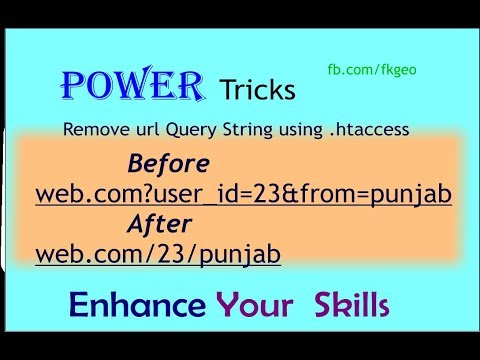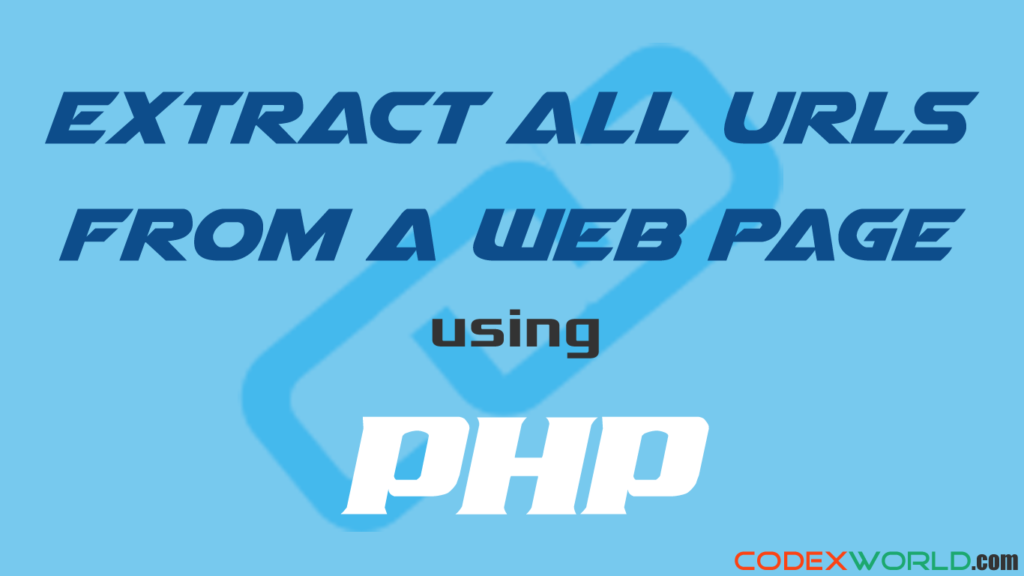Php Remove Links From String
In the world of web development, PHP is a widely used programming language known for its versatility and ease of use. Oftentimes, developers come across a scenario where they need to manipulate or modify the contents of a string that contains links. This could be due to various reasons, such as cleaning up textual data, extracting specific information, or simply removing unwanted links from a text.
Understanding the Structure of a String Containing Links
Before diving into the different methods of removing links from a string in PHP, it’s important to understand the structure of such a string. Links in HTML are typically enclosed within anchor tags (), with the href attribute specifying the URL destination. For example, a typical link in HTML would look like this:
Implementing the strstr() Function to Remove Specific Links from a String
One way to remove specific links from a string is by using the strstr() function in PHP. This function searches for a specific substring within a string and returns the remaining portion of the string after the substring. By using this function, you can easily identify and eliminate specific links from a given string.
Removing All HTML Links Using the preg_replace() Function
If you’re looking to remove all links, regardless of their attributes, from a string, the preg_replace() function comes in handy. This function performs a pattern match using regular expressions and replaces all occurrences of the matched pattern with a specified string. By using a suitable regular expression pattern, you can remove all the HTML links from a given string.
Utilizing the strip_tags() Function to Remove all HTML Tags, including Links
In some cases, you might want to remove not just the links, but also all other HTML tags from a string. The strip_tags() function in PHP allows you to accomplish this task easily. By simply passing the string containing HTML tags as the parameter, this function returns a new string without any HTML tags, including the links.
Removing Specific Links Based on Their Attributes Using Regular Expressions
In scenarios where you want to remove specific links based on their attributes, regular expressions can be your powerful ally. By crafting an appropriate regular expression pattern, you can match and eliminate links with specific attributes, such as a particular host or URL parameter. PHP’s preg_replace() function can again be used to achieve this task efficiently.
Implementing the str_replace() Function to Remove Specific Links from a String
The str_replace() function can be employed to remove specific links from a string by simply replacing them with an empty string. This function searches for a given substring within a string and replaces all occurrences of it with a specified replacement string. By providing the link that you wish to remove as the search parameter, you can effectively eliminate it from the string.
Removing All Types of Links from a String Using the filter_var() Function
For a more secure and reliable approach to removing links from a string, the filter_var() function in PHP can be utilized. This function allows you to filter a given variable using a specified filter, such as FILTER_SANITIZE_STRING. By applying this filter to the string containing links, all the URL elements, including the links, get removed, leaving you with a sanitized string.
Dealing with Special Characters or Encoded URLs While Removing Links
Special characters or encoded URLs within a string can present challenges when attempting to remove links. To handle such situations, the php urldecode() and mb_convert_encoding() functions can be used. These functions help decode any encoded URLs present in the string and convert the string to the desired character encoding, ensuring that links are properly identified and removed.
FAQs:
Q: How do I remove “https” from a string in PHP?
A: To remove “https” from a given string, you can use the str_replace() function and replace “https” with an empty string. For example:
$string = “Example string with https://example.com”;
$newString = str_replace(“https://”, “”, $string);
Q: How can I remove all HTML tags from a string in PHP?
A: PHP provides the strip_tags() function, which can be used to remove all HTML tags from a string. By passing the string containing HTML tags as the parameter, this function will return a new string without any HTML tags. For example:
$string = “
Example string with a link and other HTML tags
“;
$newString = strip_tags($string);
Q: How to extract a URL from a string in PHP?
A: To extract a URL from a string, you can use regular expressions along with the preg_match() function. By defining a suitable regular expression pattern, you can search for a URL within a string and extract it. For example:
$string = “This is an example string with a URL: https://example.com”;
preg_match(“/\b(https?:\/\/\S+)\b/”, $string, $matches);
$url = $matches[0];
Q: How can I remove the host portion from a URL in PHP?
A: To remove the host portion from a given URL in PHP, you can use the parse_url() function to parse the URL into its components. By extracting the desired component, you can obtain the URL without the host portion. For example:
$url = “https://example.com/some-page”;
$parsedUrl = parse_url($url);
$newUrl = $parsedUrl[‘path’];
Q: How can I remove a specific parameter from a URL in PHP?
A: To remove a specific parameter from a URL, you can first parse the URL using the parse_url() function. Then, you can manipulate the query string parameters as an associative array. Finally, you can reconstruct the URL without the desired parameter. For example:
$url = “https://example.com/some-page?param1=value1¶m2=value2”;
$parsedUrl = parse_url($url);
parse_str($parsedUrl[‘query’], $params);
unset($params[‘param2’]);
$newQueryString = http_build_query($params);
$newUrl = $parsedUrl[‘scheme’] . “://” . $parsedUrl[‘host’] . $parsedUrl[‘path’] . “?” . $newQueryString;
Q: How can I convert a URI to a string in PHP?
A: To convert a URI (Uniform Resource Identifier) to a string in PHP, you can use the parse_url() function to parse the URI and then extract the desired components to construct a string representation. For example:
$uri = “https://example.com/some-page?param1=value1”;
$parsedUri = parse_url($uri);
$stringUri = $parsedUri[‘scheme’] . “://” . $parsedUri[‘host’] . $parsedUri[‘path’] . “?” . $parsedUri[‘query’];
In conclusion, removing links from strings in PHP can be accomplished through several approaches, such as using string manipulation functions, regular expressions, or filters. Depending on the specific requirements and desired output, developers can choose the method that best suits their needs. By effectively removing links from strings, developers can ensure clean and well-structured data, enhancing the overall user experience.
Power Tricks (Web Development)- Remove Url Query String Using .Htaccess
How To Remove A Link From A String In Php?
In PHP, manipulating strings is a common task that developers often encounter. Removing a link from a string can be particularly useful when you need to extract plain text from HTML content. Fortunately, PHP provides several built-in functions and regular expressions that can help you accomplish this task. This article will guide you through different methods of removing links from strings in PHP, ensuring you have a deep understanding of the topic.
Method 1: Using Regular Expressions
Regular expressions offer great flexibility when it comes to working with strings. Let’s consider a scenario where we have a string containing an HTML link. To remove the link, we can make use of the preg_replace() function and a regular expression pattern.
Here’s an example implementation:
“`php
$string = ‘Click here to visit our website.’;
$pattern = ‘/
$result = preg_replace($pattern, ”, $string);
echo $result;
“`
In this example, the regular expression pattern matches the opening anchor tag ` In the era of web development, PHP remains one of the most widely used programming languages for creating dynamic websites and web applications. When working with PHP, you may often come across situations where you need to manipulate strings and remove specific elements from them. One common task that developers often face is removing `` tags from a string. In this article, we will explore different approaches to accomplish this task using PHP. ## Understanding the Problem Before diving into the solutions, let’s understand the problem at hand. An `` tag in HTML is used to create a hyperlink. It consists of an opening tag `` followed by the `href` attribute and the URL, and ends with a closing tag ``. Here’s an example: “`html Now, the task is to remove this entire `` tag from a given string, leaving only the visible text “Click here” behind. ## Solution 1: Using Strip_tags() One of the simplest ways to remove HTML tags from a string in PHP is by utilizing the `strip_tags()` function. This function removes all the HTML and PHP tags from the given string, leaving only the text. However, it’s important to note that this approach will remove all HTML tags, not just the `` tags. “`php After executing the above code, `$removedTagsString` will contain the string “Click here” with no HTML tags. ## Solution 2: Using htmlspecialchars_decode() If you specifically want to remove `` tags and keep other HTML tags intact, you can use the `htmlspecialchars_decode()` function. This function converts special HTML entities back to their characters. By applying `htmlspecialchars_decode()` twice, we can remove the `` tags while preserving other tags. “`php After executing the above code, `$decodedString` will contain the string “Click here” without the `` tag. ## Solution 3: Using Regular Expressions For more specific control over removing `` tags from a string, regular expressions can be employed. PHP provides a powerful function called `preg_replace()` that allows us to replace patterns in a string. We can use a regular expression pattern to remove the `` tags. “`php In this example, the regular expression pattern `/ ## FAQs ### Q1. Can these solutions remove nested `` tags? No, the provided solutions cannot remove nested `` tags. However, the regular expression-based solution can be extended to handle nested tags as well. ### Q2. How do I remove only the `href` attribute while keeping the `` tag intact? If you want to keep the `` tag but remove only the `href` attribute, you can modify the regular expression pattern like this: “`php After executing the above code, `$removedHrefString` will contain the string ‘Click here‘. ### Q3. Are there any drawbacks to using regular expressions for removing tags? Using regular expressions might be slightly slower compared to the `strip_tags()` or `htmlspecialchars_decode()` functions. Additionally, writing and understanding complex regular expressions can be challenging. ## Conclusion Keywords searched by users: php remove links from string php remove https from string, PHP remove, Remove all HTML tags from string PHP, php extract url from string, php remove host from url, Remove param url PHP, remove query string from url php, php uri to string Categories: Top 42 Php Remove Links From String See more here: nhanvietluanvan.com Introduction: I. Understanding the Basics of URL Formatting: II. PHP Methods for Removing HTTPS from Strings: “`php 2. Utilizing parse_url(): “`php III. Handling Special Cases: “`php IV. FAQs: 2. Are these methods case-sensitive? 3. How can I remove the protocol while retaining the “www” subdomain? “`php Conclusion: PHP is a powerful scripting language that is widely used for web development purposes. It offers a plethora of built-in functions that simplify complex programming tasks. One such function is “remove,” which allows developers to efficiently remove elements from arrays or strings. In this article, we will explore various use cases and strategies for implementing PHP remove, ensuring a comprehensive understanding of this essential function. Understanding the PHP Remove Function The PHP remove function helps manipulate arrays and strings by eliminating specific elements. This function not only simplifies data manipulation tasks but also improves code efficiency. The versatility of the remove function makes it an indispensable tool for every PHP developer. PHP Remove in Arrays Removing elements from an array can be achieved in multiple ways depending on the desired outcome. Here are some important techniques to consider: 1. Using unset(): 2. Using array_splice(): 3. Using array_filter(): PHP Remove in Strings PHP provides useful functions for manipulating strings as well. Here are some common techniques to remove specific characters or substrings: 1. Using str_replace(): 2. Using substr_replace(): 3. Using preg_replace(): FAQs Q: Is it possible to remove multiple elements from an array using unset()? Q: Can I remove array elements based on their values rather than indices? Q: Are there any performance implications when using array_splice()? Q: Can I remove substrings from a string using str_replace()? Q: Is it possible to remove elements from the beginning or end of an array? In conclusion, the PHP remove function is a versatile tool that simplifies array and string manipulation. By understanding the various methods discussed in this article, developers can efficiently remove elements or substrings, enhancing the overall functionality and efficiency of PHP code. With this knowledge at hand, harness the power of PHP remove to streamline your web development projects. When working with web development, it’s common to come across situations where you need to remove HTML tags from a string in PHP. Whether you want to clean up user input or analyze the content of a web page, removing HTML tags can help improve readability and manipulate the data according to your needs. In this article, we will dive deep into the process of removing HTML tags from a string in PHP, exploring different approaches and providing practical examples. Understanding HTML Tags HTML (Hypertext Markup Language) is the standard markup language for creating web pages. It uses tags to structure the content and specify how elements should be displayed on a web page. HTML tags are enclosed in angle brackets (< and >) and can contain attributes that provide additional information or modify the behavior of the tag. For example, the following string contains HTML tags: “`html This is a sample string with HTML tags. “` To remove all HTML tags from this string, we need to extract only the textual content between the tags. Using strip_tags() Function PHP provides a built-in function called `strip_tags()` that can be used to remove HTML tags from a string. This function takes two parameters: the input string and an optional parameter specifying the allowed tags that should not be removed. Here’s an example of removing all HTML tags from a string using `strip_tags()`: “`php This is a sample string with HTML tags. “; In the above example, the `strip_tags()` function is used to remove all HTML tags from the `$string` variable. The resulting string is stored in the `$cleanString` variable, which is then echoed to the output. As you can see, all HTML tags have been successfully removed, leaving behind only the textual content. Removing Specific Tags using strip_tags() Sometimes, you might want to preserve certain tags while removing all others. The `strip_tags()` function allows you to specify an optional parameter containing the list of tags that you want to keep. Here’s an example of removing only `` tags from a string using `strip_tags()`: “`php This is a sample string with HTML tags. “; In this example, the second parameter of `strip_tags()` is set to ``, indicating that the `` tag should be preserved. As a result, the `` tags are kept in the output string, while all other HTML tags are removed. Using Regular Expressions If you need more flexibility or want to customize the removal process, regular expressions can be a powerful tool. By using regular expressions, you can define patterns to match specific HTML tags and remove them from the input string. Here’s an example of removing HTML tags using regular expressions: “`php This is a sample string with HTML tags. “; In the above example, the `preg_replace()` function is used with a regular expression pattern `/<[^>]*>/` to match and replace all HTML tags with an empty string. The resulting string, stored in `$cleanString`, is then echoed to the output. FAQs: Q: Can I remove only specific attributes from HTML tags? Q: How can I remove line breaks and white spaces between HTML tags? Q: Is it recommended to remove all HTML tags from user input? Q: Are there any performance considerations when removing HTML tags from a large string? Q: Can I remove only the content between the HTML tags? Conclusion Removing HTML tags from a string in PHP is a common task in web development. In this article, we covered different approaches to achieve this, including using the `strip_tags()` function, regular expressions, and preserving specific tags. We also addressed frequently asked questions related to removing HTML tags. By understanding and implementing these methods, you can effectively remove HTML tags and work with clean, structured text data in your PHP applications. Article link: php remove links from string. Learn more about the topic php remove links from string. See more: nhanvietluanvan.com/luat-hocHow To Remove A Href Tag From A String In Php?
Click here
“`
$string = ‘Click here‘;
$removedTagsString = strip_tags($string);
“`
$string = ‘Click here‘;
$decodedString = htmlspecialchars_decode(htmlspecialchars_decode($string));
“`
$string = ‘Click here‘;
$removedTagsString = preg_replace(‘/
“`
$string = ‘Click here‘;
$removedHrefString = preg_replace(‘/
“`Php Remove Https From String
In the world of web development, manipulating and extracting information from strings is a common task. When working with URLs, it may be necessary to remove the “https://” prefix from a string. This article aims to provide a comprehensive guide on how to remove HTTPS from a string in PHP, covering various scenarios and offering practical examples.
Before diving into the PHP solutions, it’s important to understand how URLs are structured. A standard URL consists of a protocol (e.g., “https://”), followed by a domain name (e.g., “example.com”), and potentially additional path or query parameters. In the case of removing “https://”, we are specifically interested in manipulating the protocol section of the URL.
1. Using str_replace():
One of the most straightforward ways to remove “https://” is by utilizing PHP’s built-in str_replace() function. This function allows us to find and replace specific substrings within a given string. Here’s an example:
$url = “https://example.com”;
$newUrl = str_replace(“https://”, “”, $url);
echo $newUrl;
“`
Output: “example.com”
Another method to extract the domain name without the “https://” is by using the parse_url() function in PHP. This function parses a URL and returns an associative array containing its different components. Here’s an example:
$url = “https://example.com”;
$parsedUrl = parse_url($url);
$newUrl = $parsedUrl[‘host’];
echo $newUrl;
“`
Output: “example.com”
1. Removing HTTPS from URLs without it:
To ensure the above approaches work correctly, it is essential to consider scenarios where the input string does not contain “https://”. In such cases, the original string will remain intact. However, if you wish to guarantee consistent output, you can use an if statement to add the necessary conditions.
$url = “example.com”;
$newUrl = $url;
if (strpos($url, “https://”) === 0) {
$newUrl = str_replace(“https://”, “”, $url);
}
echo $newUrl;
“`
Output: “example.com”
1. Can these methods remove other protocols like “http://” or “ftp://”?
Certainly! The same techniques mentioned above can be applied to remove any protocol prefixes (e.g., “http://”, “ftp://”, or others). You simply need to adjust the substring you want to replace accordingly.
Yes, the str_replace() function is case-sensitive, so if you encounter URLs with different case variations (e.g., “HTTPS://”), you will need to modify the code or consider using additional PHP functions (e.g., strtolower()) to handle such cases.
To accomplish this, you can modify the parse_url() example provided earlier. Instead of retrieving only the ‘host’ element, you can fetch the entire ‘host’ value and then use the str_replace() function to remove the protocol part.
$url = “https://www.example.com”;
$parsedUrl = parse_url($url);
$host = $parsedUrl[‘host’];
$newUrl = str_replace($parsedUrl[‘scheme’] . “://”, “”, $url);
echo $newUrl;
“`
Output: “www.example.com”
When working on string manipulation tasks in PHP, the ability to extract URLs without the “https://” prefix is a handy skill. By implementing the discussed methods using str_replace() or parse_url(), developers can seamlessly remove the HTTPS protocol from strings, making it easier to handle or manipulate URLs for a variety of purposes. Understanding these techniques and their nuances empowers developers to efficiently handle different scenarios they may encounter during programming endeavors.Php Remove
The unset() function allows developers to remove specific elements from an array by specifying the desired index. It permanently erases the element, resulting in a reduced array size.
This function removes a range of elements from an array, based on the specified start and length parameters. Unlike unset(), array_splice() preserves the keys of the remaining elements, and the array size is adjusted accordingly.
This method selectively removes elements from an array based on user-defined filtering conditions. By defining a callback function, developers can easily eliminate unwanted elements, making the code concise and readable.
The str_replace() function allows developers to replace specific characters or substrings with an empty value, effectively removing them from the original string.
This function serves a similar purpose, but instead of removing elements, it replaces them with a different value specified by the developer.
The preg_replace() function offers powerful regular expression support, allowing developers to remove or replace specific patterns within a string. This method is especially useful when the removal criteria include complex patterns or conditions.
A: Yes, unset() can remove multiple array elements by specifying their respective indices as separate arguments. For example, unset($array[1], $array[2]) will remove elements with indices 1 and 2.
A: Yes, you can use array_search() in combination with unset() to remove array elements based on their values. This function retrieves the first matching key, which can then be passed to unset().
A: The array_splice() function has a slight performance overhead compared to unset(). This is because it maintains the keys of the remaining elements, resulting in reordering. However, the difference is negligible for small arrays.
A: Yes, str_replace() can remove both individual characters and substrings from a string. By specifying the substring to be removed as the first parameter and an empty string as the second parameter, the function will eliminate the occurrences of the substring.
A: Yes, both unset() and array_splice() can remove elements from any position within an array. By specifying the index(es) of the element(s) to be removed, you can manipulate the array as desired.Remove All Html Tags From String Php
$string = “
$cleanString = strip_tags($string);
echo $cleanString; // Output: This is a sample string with HTML tags.
“`
$string = “
$cleanString = strip_tags($string, ““);
echo $cleanString; // Output: This is a sample string with HTML tags.
“`
$string = “
$cleanString = preg_replace(‘/<[^>]*>/’, ”, $string);
echo $cleanString; // Output: This is a sample string with HTML tags.
“`
A: Yes, you can use regular expressions or DOM manipulation techniques to selectively remove or modify attributes within HTML tags.
A: You can use functions like `preg_replace()` or `str_replace()` to remove line breaks, white spaces, or any other unwanted characters between HTML tags in the cleaned string.
A: It depends on the context. In some cases, removing all HTML tags can help prevent potential security vulnerabilities and improve data consistency. However, in other cases, you might want to allow certain HTML tags like `` or `` in user-generated content for text formatting or linking purposes.
A: Processing large strings containing HTML tags can impact performance. If you anticipate working with large inputs, consider using alternative methods or libraries specifically designed for HTML parsing and manipulation.
A: Yes, you can modify the regular expression pattern or use HTML-specific libraries to extract and remove only the content between HTML tags while keeping the tags intact.Images related to the topic php remove links from string

Found 25 images related to php remove links from string theme




![PHP - How to get pretty or clean urls/links using HTACCESS - Full Tutorial[Part 1 of 2] - YouTube Php - How To Get Pretty Or Clean Urls/Links Using Htaccess - Full Tutorial[Part 1 Of 2] - Youtube](https://i.ytimg.com/vi/byjMGftJeyU/maxresdefault.jpg)








